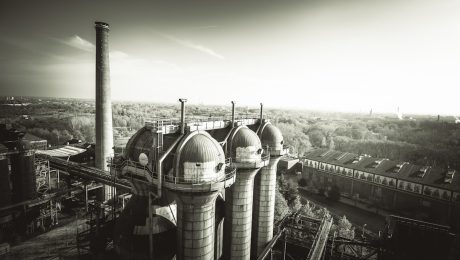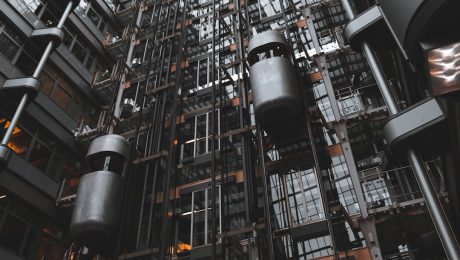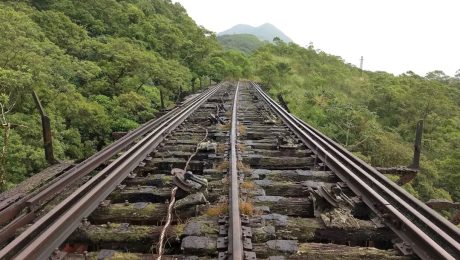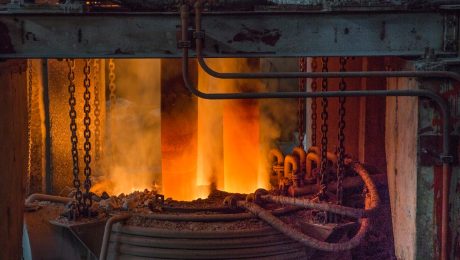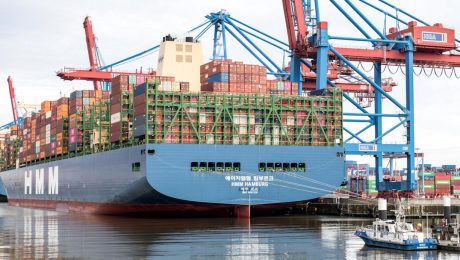Steel, a ubiquitous material in construction and industry, faces a formidable adversary in saltwater environments: corrosion. The relentless assault of seawater can significantly reduce the lifespan of steel structures, leading to costly repairs and potential safety hazards. Understanding the factors influencing steel’s durability in these harsh conditions is crucial for engineers, designers, and anyone involved in marine projects.
The Corrosive Nature of Saltwater
Saltwater’s corrosive power stems from its high concentration of dissolved salts, primarily sodium chloride (NaCl). These salts act as electrolytes, facilitating the electrochemical reactions that drive corrosion. The presence of oxygen further accelerates the process. Seawater also contains other corrosive agents, such as sulfates, chlorides, and dissolved gases, which contribute to the complexity of the corrosion mechanisms. The salinity level, temperature, and even the presence of marine organisms can all influence the rate of corrosion.
The electrochemical process involves the oxidation of iron (Fe) in steel to form iron ions (Fe2+ and Fe3+), releasing electrons. These electrons then flow through the steel to areas with lower potential, often where oxygen is more readily available. At these cathodic sites, oxygen is reduced, completing the circuit. This process leads to the formation of rust (iron oxide), which is porous and continues to degrade the underlying steel.
Choosing the Right Steel Alloy for Saltwater Applications
Not all steels are created equal when it comes to saltwater resistance. The selection of an appropriate steel alloy is paramount to ensuring long-term durability. Stainless steels, particularly those containing high levels of chromium (Cr), exhibit significantly enhanced corrosion resistance. The chromium forms a passive oxide layer on the steel surface, protecting it from further attack. Different grades of stainless steel offer varying degrees of corrosion resistance, with higher chromium content generally leading to better performance in marine environments.
Other alloying elements, such as nickel (Ni) and molybdenum (Mo), can further improve the corrosion resistance of stainless steel. These elements enhance the stability and passivity of the protective oxide layer. For particularly aggressive saltwater conditions, specialized alloys like duplex stainless steels (combining austenitic and ferritic structures) or super duplex stainless steels offer superior performance.
However, even stainless steels are not immune to corrosion in all saltwater environments. Factors like chloride concentration and temperature can still influence their performance. Careful consideration of these factors is essential for proper alloy selection.
Effective Protective Coatings for Steel in Saltwater
Applying protective coatings is a crucial strategy for enhancing the durability of steel in saltwater. These coatings act as a barrier between the steel and the corrosive environment, preventing direct contact and slowing down the corrosion process. Common coating options include:
- Zinc coatings (galvanization): Zinc provides sacrificial protection, meaning it corrodes preferentially to the steel, protecting the underlying metal.
- Paint coatings: Various paint systems, including epoxy, polyurethane, and vinyl, offer effective barrier protection. Proper surface preparation and application are critical for optimal performance.
- Protective wraps: These wraps create a physical barrier, preventing seawater from reaching the steel surface.
The choice of coating depends on factors like the severity of the environment, the required lifespan of the structure, and cost considerations. Regular inspection and maintenance of coatings are essential to ensure their continued effectiveness.
Cathodic Protection: A Powerful Corrosion Mitigation Technique
Cathodic protection is an electrochemical technique that actively protects steel from corrosion. It involves applying a negative potential to the steel structure, making it the cathode in an electrochemical cell. This prevents the oxidation of iron and thus inhibits corrosion. There are two primary methods of cathodic protection:
- Sacrificial anodes: More active metals, such as zinc or magnesium, are connected to the steel structure. These anodes corrode preferentially, protecting the steel.
- Impressed current cathodic protection (ICCP): A direct current is applied to the steel structure through an external power source and an anode, suppressing corrosion.
Cathodic protection is particularly effective in highly corrosive saltwater environments and is commonly used for protecting pipelines, ship hulls, and offshore structures.
Regular Inspection and Maintenance: The Key to Longevity
Even with the best materials and protective measures, regular inspection and maintenance are essential for ensuring the long-term durability of steel in saltwater environments. Regular visual inspections can help detect early signs of corrosion, allowing for timely repairs and preventing widespread damage. This proactive approach can significantly extend the lifespan of steel structures and avoid costly repairs or replacements.
The frequency of inspections should depend on the severity of the environment and the type of steel and protective measures used. In highly corrosive environments, more frequent inspections may be necessary. Maintenance activities may include cleaning, repainting, or repairing damaged coatings, as well as addressing any signs of corrosion.
By understanding the challenges posed by saltwater corrosion and employing appropriate materials, coatings, and maintenance strategies, we can significantly enhance the durability and lifespan of steel structures in marine environments.
Tags: saltwater corrosion, steel durability, marine steel, stainless steel, corrosion protection
body { font-family: sans-serif; line-height: 1.6; }
h1, h2, h3 { color: #333; }
img { max-width: 100%; height: auto; }
Cogeneration systems, also known as combined heat and power (CHP) systems, are marvels of energy efficiency, simultaneously generating electricity and useful heat from a single fuel source. While the focus often rests on the technological advancements in turbines and engines, a critical, often overlooked component contributing to the system’s longevity and performance is the steel used in its construction. This post delves into the vital role of steel in cogeneration, exploring the different grades, their properties, and the impact on overall system efficiency and lifespan.
Choosing the Right Steel Grade for Cogeneration Components
The selection of steel for cogeneration systems is far from arbitrary. The choice depends heavily on the operating conditions, including temperature, pressure, and the presence of corrosive agents. Different components require different grades of steel to withstand the specific stresses they endure. For instance, high-pressure steam lines might necessitate high-strength, creep-resistant steels like 316H stainless steel or even more specialized alloys. Boiler components often utilize steels with excellent heat resistance and oxidation resistance, such as low-alloy steels with additions of chromium, molybdenum, and vanadium. The selection process involves careful consideration of material properties, cost, and availability, often guided by stringent industry standards and codes.
Corrosion Resistance: A Critical Factor in Cogeneration System Lifespan
Cogeneration systems often operate in harsh environments, exposed to high temperatures, pressures, and potentially corrosive substances like water, steam, and combustion byproducts. Corrosion can significantly reduce the lifespan of system components, leading to costly repairs and downtime. Therefore, selecting steel with superior corrosion resistance is paramount. Stainless steels, particularly those with higher chromium content (like 304 and 316 grades), offer excellent resistance to oxidation and various corrosive agents. In certain applications, specialized coatings or claddings might be applied to further enhance corrosion protection. Regular inspections and maintenance are crucial to detect and address any corrosion issues promptly.
High-Temperature Strength and Creep Resistance: Ensuring Operational Reliability
Many cogeneration components operate at elevated temperatures, often exceeding 500°C (932°F). At these temperatures, steel can undergo creep, a time-dependent deformation that can lead to component failure. To mitigate creep, high-temperature, creep-resistant alloys are employed. These alloys often contain elements such as molybdenum, vanadium, and niobium, which enhance strength and resistance to high-temperature deformation. Proper heat treatment is also crucial to optimize the microstructure and maximize the steel’s creep resistance, ensuring reliable operation over the system’s design life.
The Impact of Steel Selection on Cogeneration System Efficiency
The efficiency of a cogeneration system is directly influenced by the material properties of its components. Steel with superior heat transfer properties can enhance the efficiency of heat exchangers and boilers. Similarly, steel with high strength allows for the design of lighter and more compact components, reducing material usage and improving overall system efficiency. The selection of appropriate steel grades can directly impact the system’s overall thermal efficiency and contribute to lower operating costs and reduced environmental impact.
Maintenance and Inspection of Steel Components in Cogeneration Systems
Regular inspection and maintenance of steel components are essential for ensuring the safe and efficient operation of cogeneration systems. This includes visual inspections to detect corrosion, cracking, or other signs of degradation. Non-destructive testing methods, such as ultrasonic testing and radiographic inspection, can be employed to assess the integrity of components without causing damage. A proactive maintenance strategy, coupled with appropriate repair or replacement of damaged components, is crucial for maximizing the lifespan and reliability of the cogeneration system. This proactive approach minimizes downtime and maintains optimal energy production.
The choice of steel is a critical decision in the design and construction of cogeneration systems. By carefully considering the operating conditions and selecting appropriate steel grades with superior corrosion resistance, high-temperature strength, and excellent mechanical properties, engineers can ensure the long-term reliability, efficiency, and safety of these vital energy production systems.
SEO-Friendly Tags:
- Cogeneration Steel
- Combined Heat and Power Steel
- High-Temperature Steel Cogeneration
- Corrosion Resistant Steel CHP
- Steel Grades for Cogeneration
Power plants, the behemoths of energy generation, rely on robust and reliable infrastructure. At the heart of this infrastructure lies a critical component: steel profiles. These precisely engineered steel sections are far more than just structural elements; they are the backbone of safety, efficiency, and longevity in power plant construction and operation. This comprehensive guide delves into the multifaceted role of steel profiles in this demanding industry.
1. The Diverse Applications of Steel Profiles in Power Plants
Steel profiles find applications across a vast spectrum within power plants. Their versatility allows them to serve diverse functions, from supporting massive turbines and generators to forming the framework for intricate piping systems and control rooms. Some key applications include:
- Structural Frameworks: Steel profiles, including I-beams, H-beams, channels, and angles, form the skeletal structure of power plant buildings, supporting heavy machinery and withstanding seismic activity and extreme weather conditions.
- Turbine and Generator Support: The immense weight and vibrations of turbines and generators necessitate exceptionally strong and stable support structures, often constructed from heavy-duty steel profiles designed to withstand high dynamic loads.
- Piping and Ductwork: Steel profiles are crucial in supporting and securing the extensive networks of piping for steam, water, and other fluids, as well as ductwork for ventilation and air conditioning.
- Platforms and Walkways: Elevated platforms and walkways, essential for maintenance and access to equipment, are often fabricated using steel profiles, ensuring worker safety and ease of movement.
- Crane Rails and Support Structures: Heavy-duty cranes, vital for transporting large components within the plant, rely on robust steel profile systems for their tracks and support structures.
2. Material Selection: Choosing the Right Steel for Power Plant Applications
The choice of steel profile material is critical, depending on the specific application and environmental conditions. Factors considered include:
- Strength and Yield Strength: High strength steel is essential for bearing heavy loads and resisting stress. Yield strength determines the point at which the steel starts to deform permanently.
- Corrosion Resistance: Power plants often operate in harsh environments, exposing steel to moisture, chemicals, and high temperatures. Corrosion-resistant steels, such as stainless steel or weathering steel, may be necessary.
- Temperature Resistance: Components operating at high temperatures, such as those near boilers or turbines, require steel with excellent high-temperature strength and creep resistance.
- Weldability: Many steel profiles are joined using welding, so weldability is a crucial factor. The chosen steel must be easily weldable without compromising its structural integrity.
- Fatigue Resistance: Components subjected to repetitive loading and unloading, such as those in vibrating machinery, need high fatigue resistance to prevent failure.
3. Manufacturing and Fabrication Processes: Precision Engineering for Power Plants
The manufacturing and fabrication of steel profiles for power plants require high precision and adherence to strict quality control standards. Common processes include:
- Hot Rolling: This process shapes steel into the desired profile at high temperatures, resulting in high strength and dimensional accuracy.
- Cold Forming: This process shapes steel at room temperature, allowing for more intricate profiles and tighter tolerances.
- Welding: Various welding techniques, such as arc welding, MIG welding, and TIG welding, are used to join steel profiles to create complex structures.
- Cutting and Machining: Precise cutting and machining techniques ensure that profiles fit perfectly and meet the required specifications.
- Surface Treatment: Surface treatments like painting, galvanizing, or coating protect steel profiles from corrosion and enhance their lifespan.
4. Ensuring Safety and Efficiency through Optimized Steel Profile Design
The design and selection of steel profiles directly impact the safety and efficiency of a power plant. Optimized designs minimize material usage without compromising strength, reducing costs and construction time. Furthermore, careful consideration of:
- Seismic Design: Steel profiles must be designed to withstand seismic forces in earthquake-prone regions.
- Fire Resistance: Fire-resistant coatings and designs are crucial for ensuring structural integrity in case of fire.
- Accessibility and Maintainability: Designs should facilitate easy access to equipment for maintenance and repairs.
- Modular Construction: Using prefabricated steel profile components can significantly reduce construction time and costs.
- Lifecycle Assessment: Considering the entire lifecycle of the steel profiles, from manufacturing to disposal, is crucial for sustainability.
5. The Future of Steel Profiles in Power Plant Construction: Innovation and Sustainability
The power generation industry is undergoing a significant transformation, driven by the need for cleaner and more sustainable energy sources. This shift influences the future of steel profiles in power plants. We can expect to see:
- Increased use of high-strength low-alloy steels (HSLA): These steels offer improved strength-to-weight ratios, reducing material usage and construction costs.
- Greater adoption of advanced manufacturing techniques: 3D printing and other advanced manufacturing techniques could revolutionize the production of steel profiles, enabling complex designs and customized solutions.
- Focus on sustainable steel production: The industry is moving towards more sustainable steel production methods, reducing carbon emissions and environmental impact.
- Integration of smart sensors and monitoring systems: Monitoring the structural health of steel profiles using sensors can improve safety and prevent unexpected failures.
- Development of new steel alloys with enhanced properties: Research and development efforts are focused on creating new steel alloys with improved corrosion resistance, high-temperature strength, and other desired properties.
In conclusion, steel profiles are indispensable components in the construction and operation of power plants. Their versatility, strength, and durability contribute significantly to the safety, efficiency, and longevity of these vital energy infrastructure assets. As the power generation industry continues to evolve, the role of steel profiles will remain central, adapting to new challenges and technological advancements.
In a world increasingly conscious of hygiene and infection control, the development of antibacterial materials has become crucial. Antibacterial steel surfaces, specifically stainless steel infused with antimicrobial properties, are emerging as a powerful tool in the fight against harmful bacteria and germs. This post delves into the science, applications, and future of this innovative technology.
Understanding the Science Behind Antibacterial Steel
Traditional stainless steel, while durable and resistant to corrosion, doesn’t inherently inhibit bacterial growth. Antibacterial steel achieves its germ-fighting capabilities through various methods. One common approach involves incorporating antimicrobial agents directly into the steel during its manufacturing process. These agents, often silver ions or copper ions, are released slowly over time, disrupting the bacterial cell membrane and preventing bacterial proliferation. The concentration and type of antimicrobial agent determine the effectiveness and longevity of the antibacterial properties. Another method involves creating a surface texture that physically inhibits bacterial adhesion, making it harder for bacteria to colonize the surface. This can be achieved through specific surface treatments or by manipulating the steel’s microstructure during manufacturing.
Applications of Antibacterial Steel in Diverse Industries
The versatility of antibacterial steel makes it suitable for a wide range of applications across various industries. In healthcare settings, it finds use in countertops, sinks, and medical equipment, reducing the risk of hospital-acquired infections (HAIs). The food and beverage industry benefits from its use in food preparation surfaces, preventing bacterial contamination and ensuring food safety. Public spaces, such as airports, train stations, and shopping malls, can leverage antibacterial steel in high-touch areas like handrails and door handles to minimize the spread of germs. Even in residential settings, antibacterial steel kitchen appliances and countertops offer an added layer of hygiene.
Effectiveness and Testing of Antibacterial Steel Surfaces
The effectiveness of antibacterial steel is rigorously tested using standardized methodologies. Common tests include assessing the reduction in bacterial colonies on the treated surface compared to untreated stainless steel. These tests typically use specific bacteria strains known for their prevalence in various settings, such as Staphylococcus aureus (MRSA), Escherichia coli, and Pseudomonas aeruginosa. The results are usually expressed as a percentage reduction in bacterial growth or a logarithmic reduction (log reduction). Factors influencing the effectiveness include the type and concentration of antimicrobial agents, the surface area exposed, the duration of exposure, and environmental conditions such as temperature and humidity. Independent certifications and testing are crucial to ensure that the claimed antibacterial properties are truly effective and meet industry standards.
Limitations and Considerations of Antibacterial Steel
While antibacterial steel offers significant advantages, it’s essential to acknowledge its limitations. The effectiveness of the antimicrobial agents can diminish over time due to wear and tear, cleaning procedures, or environmental factors. Regular cleaning and maintenance are crucial to maintain the antibacterial properties. The cost of antibacterial steel is typically higher than that of standard stainless steel, which might be a limiting factor for some applications. Furthermore, the long-term effects of the released antimicrobial agents on human health and the environment require further research and careful consideration. It’s also vital to understand that antibacterial steel is not a replacement for proper hygiene practices; it’s a supplementary measure to improve overall sanitation.
The Future of Antibacterial Steel and Emerging Technologies
Research and development continue to advance the field of antibacterial steel. Scientists are exploring new antimicrobial agents with enhanced effectiveness and longer durability. Nanotechnology is playing a crucial role in developing innovative surface treatments that enhance the antimicrobial properties and improve the resistance to wear and tear. The integration of self-cleaning properties, such as photocatalytic coatings, is another promising area of research. Furthermore, the development of sustainable and environmentally friendly antimicrobial agents is crucial to minimize the potential negative impacts on the environment. The future of antibacterial steel promises even more effective and sustainable solutions for improving hygiene and infection control in various settings.
In conclusion, antibacterial steel surfaces represent a significant advancement in hygiene and infection control. While it’s not a silver bullet, its contribution to reducing bacterial contamination in various environments is undeniable. Ongoing research and development will continue to refine this technology, making it an increasingly important tool in the fight against harmful bacteria and germs.
Railways, the arteries of global transportation, rely heavily on a single, robust material: steel. From the tracks that guide trains to the towering bridges that span valleys and rivers, steel forms the very backbone of this vital infrastructure. This post delves into the multifaceted role of steel in railway systems, exploring its various applications, the different types of steel used, and the ongoing innovations shaping its future.
1. Steel Rails: The Foundation of Railway Tracks
The most visible application of steel in railway infrastructure is, undoubtedly, the rails themselves. These long, continuous steel beams provide the guiding surface for train wheels, bearing immense weight and enduring constant friction and impact. The strength and durability of the rails are paramount to ensuring safe and efficient train operations. Different steel grades are used depending on the anticipated load, speed, and environmental conditions. High-carbon steel rails are commonly used for high-speed lines due to their superior strength and wear resistance. These rails undergo rigorous quality control processes to meet stringent safety standards. Furthermore, advancements in steel metallurgy have led to the development of advanced rail profiles designed to optimize weight distribution and reduce wear, contributing to increased lifespan and reduced maintenance costs.
2. Steel Bridges: Spanning the Gaps
Railway lines often traverse challenging terrains, requiring the construction of bridges to overcome obstacles like rivers, valleys, and roadways. Steel, with its high tensile strength and versatility, is the preferred material for constructing these crucial structures. Steel bridges can be designed in various configurations, from simple beam bridges to complex arch and suspension bridges, depending on the span length and load requirements. The design and fabrication of steel railway bridges involve sophisticated engineering calculations to ensure structural integrity and safety. Welding and bolting techniques play a crucial role in connecting steel components to create robust and durable structures. Regular inspections and maintenance are vital to ensure the longevity and safety of steel railway bridges, with advanced non-destructive testing methods employed to detect potential flaws early on.
3. Steel in Rolling Stock: Building Safe and Efficient Trains
Beyond the infrastructure, steel plays a critical role in the construction of rolling stock – the trains themselves. The chassis, bogies (wheelsets), and car bodies of trains are predominantly made from steel, providing the structural integrity and safety necessary to transport passengers and freight. High-strength low-alloy steels (HSLA) are often employed in train construction due to their excellent combination of strength, weldability, and formability. These steels allow for lighter yet stronger train carriages, leading to improved fuel efficiency and reduced operational costs. Furthermore, advancements in steel technology have enabled the incorporation of advanced safety features, such as crash-resistant designs and enhanced protection for passengers.
4. Steel in Railway Signaling and Safety Systems
The safe and efficient operation of railways relies heavily on sophisticated signaling and safety systems. Steel plays a supporting role here too, forming the structural components of signal masts, switch mechanisms, and other safety-critical equipment. The strength and durability of steel are crucial for ensuring the reliable operation of these systems, even under harsh environmental conditions. The precise fabrication and installation of steel components in signaling systems are essential for preventing accidents and ensuring the smooth flow of train traffic. Corrosion resistance is also a key consideration, with protective coatings and galvanization frequently used to extend the lifespan of steel components in outdoor environments.
5. The Future of Steel in Railway Infrastructure: Sustainability and Innovation
The railway industry is increasingly focused on sustainability and environmental responsibility. In the context of steel, this translates into research and development efforts focused on reducing the carbon footprint of steel production and improving the recyclability of steel components. The use of recycled steel in railway infrastructure is becoming increasingly common, contributing to a circular economy approach. Furthermore, innovative steel alloys and manufacturing techniques are being developed to further enhance the strength, durability, and lifespan of steel components, minimizing the need for replacement and reducing waste. The integration of smart sensors and monitoring technologies within steel structures allows for real-time assessment of structural health, enabling proactive maintenance and preventing potential failures.
In conclusion, steel’s crucial role in railway infrastructure is undeniable. Its strength, durability, versatility, and recyclability make it an indispensable material for building and maintaining safe, efficient, and sustainable railway networks. Continuous innovation in steel technology will undoubtedly shape the future of railway infrastructure, ensuring the ongoing success of this vital mode of transportation.
SEO Keywords:
Steel railway, railway infrastructure, steel in transportation, railway steel bridges, high-strength steel
Cold drawn round steel bars are ubiquitous in modern manufacturing, serving as foundational components in countless applications. Their superior strength, precision, and surface finish make them indispensable across diverse industries. This comprehensive guide will delve into the intricacies of these remarkable steel products, exploring their manufacturing process, properties, applications, and the factors influencing their selection.
The Cold Drawing Process: Precision Engineering at its Finest
Unlike hot-rolled steel bars, cold drawn round steel bars undergo a process of deformation at room temperature. This process begins with a hot-rolled bar, which is typically already quite accurately sized. It’s then subjected to a series of drawing operations through progressively smaller dies. This controlled reduction in diameter significantly improves the material’s properties. The process involves:
- Pickling: The hot-rolled bar is cleaned to remove scale and impurities, ensuring a clean surface for subsequent drawing.
- Drawing: The bar is pulled through a series of dies, each reducing its diameter. This process induces significant strain hardening, increasing the tensile strength and yield strength of the steel.
- Straightening: After drawing, the bar is straightened to ensure dimensional accuracy and eliminate any residual curvature.
- Cutting to Length: Finally, the bar is cut to the required lengths, often with high precision.
The cold drawing process results in a superior surface finish, tighter tolerances, and improved mechanical properties compared to hot-rolled bars. This precision is crucial for applications requiring tight dimensional control and high strength.
Exceptional Mechanical Properties: Strength, Hardness, and More
The cold drawing process dramatically alters the mechanical properties of the steel. The strain hardening leads to a significant increase in:
- Tensile Strength: Cold drawn bars exhibit considerably higher tensile strength than hot-rolled counterparts, making them ideal for applications requiring high load-bearing capacity.
- Yield Strength: The yield strength, the point at which the material begins to deform permanently, is also significantly enhanced, ensuring greater resistance to deformation under stress.
- Hardness: The cold drawing process increases the hardness of the steel, improving its wear resistance and making it suitable for applications involving abrasive forces.
- Ductility: While increased strength often comes at the cost of ductility (the ability to deform without breaking), cold drawn steel still retains sufficient ductility for many applications.
The precise control over the drawing process allows for tailoring the mechanical properties to meet specific application requirements.
Diverse Applications Across Industries: A Versatile Material
Cold drawn round steel bars find widespread use in a variety of industries due to their exceptional properties. Some key applications include:
- Automotive Industry: Used in components like axles, shafts, and connecting rods, where high strength and precision are essential.
- Construction Industry: Employed in reinforcing bars, structural components, and other applications requiring high tensile strength and durability.
- Machinery Manufacturing: Utilized in spindles, shafts, and other machine parts requiring high precision and wear resistance.
- Aerospace Industry: Used in high-strength, lightweight components where both strength and weight are critical factors.
- Medical Devices: In applications demanding high precision and biocompatibility.
The versatility of cold drawn round steel bars stems from their ability to meet diverse mechanical and dimensional requirements.
Selecting the Right Grade: Understanding Material Specifications
Choosing the appropriate grade of cold drawn round steel bar is crucial for ensuring the component’s performance and longevity. Steel grades are specified based on their chemical composition and mechanical properties. Commonly used grades include:
- 1018 Steel: A medium-carbon steel offering a good balance of strength, ductility, and machinability.
- 1045 Steel: A higher-carbon steel with increased strength and hardness, suitable for applications requiring higher load-bearing capacity.
- 4140 Steel: A chromium-molybdenum alloy steel known for its excellent strength, toughness, and hardenability.
- 8620 Steel: A nickel-chromium-molybdenum alloy steel with high strength and excellent toughness, often used in demanding applications.
Selecting the right grade requires careful consideration of the specific application requirements, including load-bearing capacity, required strength, and necessary surface finish.
Advantages of Cold Drawn Round Steel Bars: Why Choose Them?
Cold drawn round steel bars offer several advantages over other steel products:
- High Strength and Hardness: Superior mechanical properties compared to hot-rolled bars.
- Precise Dimensions and Tolerances: Reduced machining requirements and improved component accuracy.
- Excellent Surface Finish: Minimizes the need for further surface treatments.
- Improved Fatigue Resistance: Enhanced resistance to cyclic loading.
- Cost-Effective: Reduced machining time and material waste can lead to overall cost savings.
These advantages make cold drawn round steel bars a preferred choice for many applications requiring high precision, strength, and durability.
In conclusion, cold drawn round steel bars represent a remarkable achievement in materials engineering, offering a combination of strength, precision, and versatility that is unmatched by many other materials. Their widespread adoption across various industries underscores their importance in modern manufacturing.
Tags: cold drawn steel, round steel bars, steel bar specifications, steel grades, precision steel, manufacturing process
Technical guides and manuals are the unsung heroes of the modern technological world. They bridge the gap between complex systems and their users, enabling efficient operation, troubleshooting, and problem-solving. Whether you’re a seasoned professional or a first-time user, understanding the value and creation of effective technical documentation is crucial. This comprehensive guide explores the multifaceted world of technical guides and manuals, offering insights for both users and creators.
The Importance of Clear and Concise Technical Writing
The effectiveness of any technical guide hinges on the clarity and conciseness of its writing. Ambiguity can lead to errors, frustration, and even safety hazards. Good technical writing prioritizes precision. Every term should be defined, every step clearly explained, and every diagram meticulously labeled. The use of simple, direct language is paramount, avoiding jargon unless absolutely necessary and always providing context when specialized terms are unavoidable. Consider your target audience: A manual for experienced engineers will differ significantly from one intended for home users. Tailoring the language and complexity to the audience’s level of expertise is vital for comprehension and user satisfaction.
Different Types of Technical Guides and Manuals
Technical documentation comes in many forms, each serving a specific purpose. Some common types include:
- User Manuals: These provide step-by-step instructions for using a product or system. They often include troubleshooting sections and safety information.
- Installation Guides: These focus specifically on the process of setting up and configuring a product or system.
- Troubleshooting Guides: These are dedicated to resolving common problems and errors, often providing solutions and workarounds.
- API Documentation: For software developers, API documentation describes how to interact with a software application’s programming interface.
- Reference Manuals: These provide detailed information about the features and functions of a product or system, often organized alphabetically or by category.
- Maintenance Manuals: These guides detail procedures for regular maintenance and repair of equipment.
Understanding the different types ensures you access the right information when needed.
Effective Strategies for Using Technical Manuals
Navigating technical manuals effectively can significantly enhance your experience. Start by familiarizing yourself with the table of contents and index to locate relevant information quickly. Pay close attention to safety warnings and precautions. If you encounter a problem, carefully review the troubleshooting section before seeking external assistance. Don’t hesitate to use the search function (if available) to find specific keywords or phrases. If the manual is online, take advantage of features like hyperlinks and interactive elements. Finally, remember that many manufacturers offer online support forums or knowledge bases where you can find additional information and assistance from other users and experts.
Creating Effective Technical Documentation: A Writer’s Guide
Creating compelling technical documentation requires a blend of technical expertise and writing skills. Begin by clearly defining your target audience and their level of technical proficiency. Develop a detailed outline before writing, ensuring a logical flow of information. Use a consistent style and tone throughout the document. Include visual aids such as diagrams, screenshots, and flowcharts to enhance understanding. Employ clear and concise language, avoiding jargon whenever possible. Thoroughly test your documentation to identify and correct any errors or ambiguities. Regularly update your documentation to reflect changes in the product or system.
The Role of Technology in Technical Guide Creation and Distribution
Technology plays a crucial role in both creating and distributing technical guides. Software like MadCap Flare, RoboHelp, and FrameMaker are commonly used for creating professional-looking and easily searchable documentation. These tools allow for single-sourcing, meaning that content can be reused across multiple documents and platforms. Online platforms like GitHub and GitLab are becoming increasingly popular for managing and collaborating on technical documentation projects. Furthermore, the use of cloud-based storage and distribution methods allows for easy access to updated manuals and guides, ensuring users always have the most current information at their fingertips. Interactive elements, embedded videos, and searchable PDFs enhance user experience and understanding.
In conclusion, technical guides and manuals are essential tools for navigating the complexities of modern technology. Understanding their importance, various types, and effective use is crucial for both users and creators. By focusing on clear communication, user-centric design, and leveraging technology, we can create documentation that empowers individuals and organizations to fully utilize the potential of technology.
SEO Tags:
- Technical Guides
- User Manuals
- Technical Documentation
- Technical Writing
- Software Documentation
body { font-family: sans-serif; line-height: 1.6; }
h1, h2, h3 { color: #333; }
img { max-width: 100%; height: auto; }
At GloballSteel, quality isn’t just a department; it’s the cornerstone of our entire operation. We believe that delivering superior steel products requires a comprehensive and rigorously implemented Quality Management System (QMS). This commitment extends beyond meeting industry standards; it’s about exceeding expectations and building lasting relationships with our customers based on trust and reliability.
ISO 9001 Certification: The Foundation of Our QMS
Our commitment to quality is formally recognized through our ISO 9001 certification. This internationally recognized standard demonstrates our adherence to a robust framework for quality management, encompassing all aspects of our business, from raw material sourcing to final product delivery. The ISO 9001 framework guides our processes, ensures consistency, and provides a structured approach to continuous improvement. Regular audits and internal reviews ensure we maintain compliance and continuously refine our system to meet evolving industry best practices and customer needs. Achieving and maintaining this certification isn’t just a tick-box exercise; it’s a testament to our dedication to providing consistently high-quality steel products.
Stringent Quality Control at Every Stage
Our QMS isn’t confined to paperwork; it’s deeply embedded in every stage of our production process. From the moment raw materials arrive, they undergo rigorous inspection and testing to ensure they meet our stringent specifications. Our state-of-the-art testing facilities utilize advanced technologies to analyze chemical composition, mechanical properties, and dimensional accuracy. Throughout the manufacturing process, multiple checkpoints are implemented to monitor every aspect of production, identifying and addressing potential issues proactively. This proactive approach minimizes defects and ensures that only the highest-quality steel leaves our facilities.
Advanced Testing and Analytical Capabilities
GloballSteel invests heavily in cutting-edge testing equipment and analytical capabilities. This allows us to perform a wide range of tests, including tensile testing, hardness testing, impact testing, chemical analysis, and metallurgical examination. This comprehensive testing regimen ensures that our steel products consistently meet – and often exceed – the required specifications, guaranteeing superior performance and reliability for our customers. Our dedicated team of quality control engineers meticulously analyze the results, ensuring data accuracy and identifying any areas for improvement within our processes. The data collected is also used for continuous improvement initiatives.
Continuous Improvement: A Culture of Excellence
At GloballSteel, continuous improvement isn’t just a goal; it’s a deeply ingrained part of our culture. We utilize various methodologies, including Kaizen and Lean principles, to identify and eliminate waste, optimize processes, and enhance efficiency. Regular internal audits, customer feedback analysis, and employee suggestions are all vital components of our continuous improvement efforts. We actively seek opportunities to improve our processes, reduce defects, and enhance customer satisfaction. This commitment to continuous improvement ensures that our QMS remains dynamic and adaptable to the ever-evolving demands of the steel industry.
Customer Focus: The Ultimate Measure of Success
Ultimately, the success of our QMS is measured by the satisfaction of our customers. We actively solicit feedback from our clients to understand their needs and expectations. This feedback is invaluable in identifying areas for improvement and ensuring that our products consistently meet – and exceed – their requirements. Our commitment to customer focus is reflected in our responsive customer service, prompt issue resolution, and proactive communication. We strive to build strong, long-term relationships with our customers based on trust, reliability, and a shared commitment to quality.
GloballSteel’s unwavering commitment to quality is not merely a statement; it’s a demonstrable reality reflected in our ISO 9001 certification, stringent quality control processes, advanced testing capabilities, and a culture of continuous improvement. We are confident in our ability to deliver superior steel products that consistently meet the demanding needs of our customers.
Tags: GloballSteel, Quality Management System, QMS, ISO 9001, Steel Quality Control, Continuous Improvement
Expanding your business to 40+ countries is an ambitious undertaking, requiring a meticulously planned and executed export strategy. This isn’t a task to be taken lightly; success hinges on understanding diverse markets, navigating complex regulations, and managing intricate logistics. This guide provides a roadmap to help you navigate the challenges and unlock the potential of international trade.
1. Comprehensive Market Research: Identifying Your Target Markets
Before even considering shipping a single product, thorough market research is paramount. Exporting to 40+ countries necessitates a segmented approach. You can’t treat all markets the same. Start by identifying potential markets based on factors like:
- Demand analysis: Research the demand for your product or service in specific countries. Consider factors like consumer preferences, purchasing power, and existing competition.
- Market size and growth potential: Focus on countries with significant market size and promising growth projections for your industry.
- Regulatory environment: Understand import tariffs, taxes, licensing requirements, and other regulations that may impact your operations in each target market.
- Cultural nuances: Adapt your marketing and sales strategies to reflect the cultural sensitivities and preferences of your target audience. Language barriers, religious customs, and social norms should all be carefully considered.
- Competitive landscape: Analyze the existing competition in each target market. Understanding their strengths, weaknesses, and market share will help you position your offerings effectively.
Tools like market research databases, industry reports, and government resources can provide valuable insights. Consider conducting primary research, such as surveys or focus groups, to gather more specific information.
2. Navigating Legal and Regulatory Compliance: Ensuring Smooth Operations
Exporting involves a complex web of legal and regulatory requirements. Each country has its own set of rules and regulations governing imports, including:
- Import tariffs and taxes: Understanding the tariff rates and tax implications for your products in each target market is crucial for accurate pricing and profitability calculations.
- Customs regulations: Familiarize yourself with the customs procedures and documentation requirements for each country. Incorrect documentation can lead to delays or even rejection of your shipment.
- Product labeling and standards: Many countries have specific labeling requirements and product standards that must be met before your products can be legally sold.
- Intellectual property protection: Ensure your intellectual property rights are protected in each target market through appropriate registration and enforcement mechanisms.
- Export controls and sanctions: Be aware of any export controls or sanctions that may apply to your products or your target markets. Non-compliance can lead to severe penalties.
Seek professional legal and customs brokerage advice to ensure compliance and avoid costly mistakes.
3. Optimizing Logistics and Supply Chain Management: Efficient Delivery
Efficient logistics are the backbone of successful exporting. Managing the movement of goods across international borders requires careful planning and execution:
- Choosing the right shipping methods: Select the most cost-effective and reliable shipping methods based on factors like product type, delivery time, and budget. Options include sea freight, air freight, and courier services.
- International freight forwarding: Partnering with a reputable freight forwarder can simplify the process of shipping goods internationally. They handle customs clearance, documentation, and transportation.
- Inventory management: Develop an effective inventory management system to ensure you have enough stock to meet demand while minimizing storage costs.
- Warehouse and distribution networks: Consider establishing warehousing and distribution networks in key target markets to improve delivery times and reduce shipping costs.
- Supply chain risk management: Identify and mitigate potential risks in your supply chain, such as delays, disruptions, and geopolitical instability.
Invest in robust logistics technology to track shipments and manage inventory effectively.
4. Adapting Your Marketing and Sales Strategies: Reaching Global Customers
Marketing and selling your products or services internationally requires adapting your strategies to resonate with diverse cultures and preferences:
- Localization: Adapt your marketing materials, including website content, product descriptions, and advertising campaigns, to reflect the language and cultural nuances of each target market.
- Digital marketing: Utilize digital marketing channels, such as search engine optimization (SEO), social media marketing, and online advertising, to reach potential customers in different countries.
- Distribution channels: Establish appropriate distribution channels in each target market, such as online marketplaces, retail partnerships, and direct sales.
- International payment processing: Set up secure and efficient payment processing systems to facilitate transactions with international customers.
- Customer service: Provide excellent customer service in the local language and address any cultural sensitivities.
Consider partnering with local marketing agencies to leverage their expertise and market knowledge.
5. Financial Planning and Risk Management: Protecting Your Investment
Exporting involves significant financial investment and risk. Careful financial planning and risk management are essential for success:
- Funding your export operations: Secure adequate funding through bank loans, export credit agencies, or other financing options.
- Foreign exchange risk management: Implement strategies to mitigate the risks associated with fluctuations in currency exchange rates.
- Credit risk management: Assess the creditworthiness of your international customers to minimize the risk of non-payment.
- Insurance: Obtain appropriate insurance coverage to protect your goods during transit and to mitigate other potential risks.
- Financial forecasting and budgeting: Develop accurate financial forecasts and budgets to track your progress and make informed decisions.
Consult with financial professionals to develop a comprehensive financial plan and risk management strategy.
Exporting to 40+ countries is a challenging but potentially rewarding endeavor. By following a well-defined strategy that incorporates market research, legal compliance, efficient logistics, targeted marketing, and robust financial planning, you can significantly increase your chances of success in conquering global markets.
SEO Tags:
- Export Strategy
- International Trade
- Global Expansion
- Export Compliance
- International Logistics
body { font-family: sans-serif; line-height: 1.6; }
h1, h2, h3 { color: #333; }
ul { list-style-type: disc; margin-left: 20px; }
Shipping goods internationally can seem daunting, but with careful planning and the right knowledge, it can be a smooth and efficient process. This comprehensive guide will walk you through every step, ensuring your overseas shipment arrives safely and on time.
1. Choosing the Right Shipping Method: Sea, Air, or Land?
The first crucial decision is selecting the appropriate shipping method. Your choice depends on several factors, including the type of goods, urgency, budget, and destination.
- Sea Freight: Ideal for large, heavy, and less time-sensitive shipments. It’s generally the most cost-effective option but has the longest transit times.
- Air Freight: The fastest option, perfect for urgent shipments or valuable, smaller goods. It’s significantly more expensive than sea freight.
- Land Freight (Road or Rail): Suitable for shipments between neighboring countries or regions. Transit times are typically shorter than sea freight but longer than air freight. This option is often used in conjunction with other modes of transport (e.g., rail to port for sea freight).
Consider the pros and cons of each method carefully, weighing the cost against the speed and risk involved. Consulting with a freight forwarder can be invaluable at this stage.
2. Packaging Your Goods for International Transit: Protection is Key
Proper packaging is paramount to ensure your goods arrive undamaged. International shipping exposes goods to rough handling and varying environmental conditions.
- Use sturdy containers: Choose boxes made of strong corrugated cardboard, suitable for the weight and fragility of your goods. Avoid using recycled boxes that may be weakened.
- Adequate cushioning: Use sufficient packing material like bubble wrap, foam peanuts, or air pillows to protect your goods from impact and vibration. Ensure fragile items are individually wrapped.
- Proper labeling: Clearly label each package with the correct address, including the recipient’s name, address, phone number, and any special handling instructions (e.g., “fragile,” “handle with care”). Use clear and durable labels.
- Pallettization: For larger shipments, palletization is recommended for easier handling and stacking. Secure the goods to the pallet using appropriate straps or shrink wrap.
Invest in quality packaging materials; it’s a small price to pay to prevent costly damage and delays.
3. Navigating Customs and Import Regulations: Documentation is Crucial
Customs clearance is a critical aspect of overseas shipment planning. Different countries have varying regulations and documentation requirements. Failure to comply can lead to delays, fines, or even the seizure of your goods.
- Commercial Invoice: This document details the goods being shipped, their value, and the buyer and seller information. It’s crucial for customs assessment.
- Packing List: A detailed list of the contents of each package, including quantities, weight, and dimensions.
- Bill of Lading (B/L): A document issued by the carrier acknowledging receipt of the goods and acting as a contract of carriage. It’s essential for claiming your goods at the destination.
- Certificate of Origin: This document verifies the country of origin of the goods, which is often required for customs purposes.
- Other permits and licenses: Depending on the type of goods, you may need additional permits or licenses, such as health certificates for food products or import licenses for specific items.
It’s advisable to consult with a customs broker or freight forwarder to ensure compliance with all applicable regulations.
4. Selecting a Reliable Freight Forwarder: Expertise and Support
A freight forwarder acts as an intermediary between you and various transportation providers, handling the complexities of international shipping. Choosing the right forwarder is crucial for a successful shipment.
- Experience and reputation: Look for a forwarder with a proven track record and positive customer reviews.
- Global network: Ensure they have a strong network of agents and partners in your destination country.
- Competitive pricing: Obtain quotes from multiple forwarders to compare prices and services.
- Insurance options: Inquire about cargo insurance options to protect your goods against loss or damage during transit.
- Tracking and communication: A reliable forwarder will provide regular updates and clear communication throughout the shipping process.
Don’t hesitate to ask questions and clarify any uncertainties before engaging a freight forwarder.
5. Tracking Your Shipment and Handling Potential Issues: Proactive Monitoring
Once your shipment is underway, it’s important to monitor its progress. Proactive tracking can help identify and address potential issues promptly.
- Tracking numbers: Your freight forwarder will provide tracking numbers to monitor the location of your shipment.
- Regular communication: Stay in contact with your forwarder and the recipient to address any delays or unexpected events.
- Contingency planning: Have a plan in place to handle potential delays or damage. This may involve negotiating with your forwarder or filing insurance claims.
- Documentation: Keep all relevant documentation, including invoices, packing lists, and tracking information, for reference.
By staying informed and proactive, you can minimize the impact of any unexpected problems.
Overseas shipment planning requires careful attention to detail and proactive management. By following these steps, you can significantly increase the likelihood of a smooth and successful international shipment.
SEO Tags:
overseas shipping, international shipping, freight forwarding, customs clearance, export import


